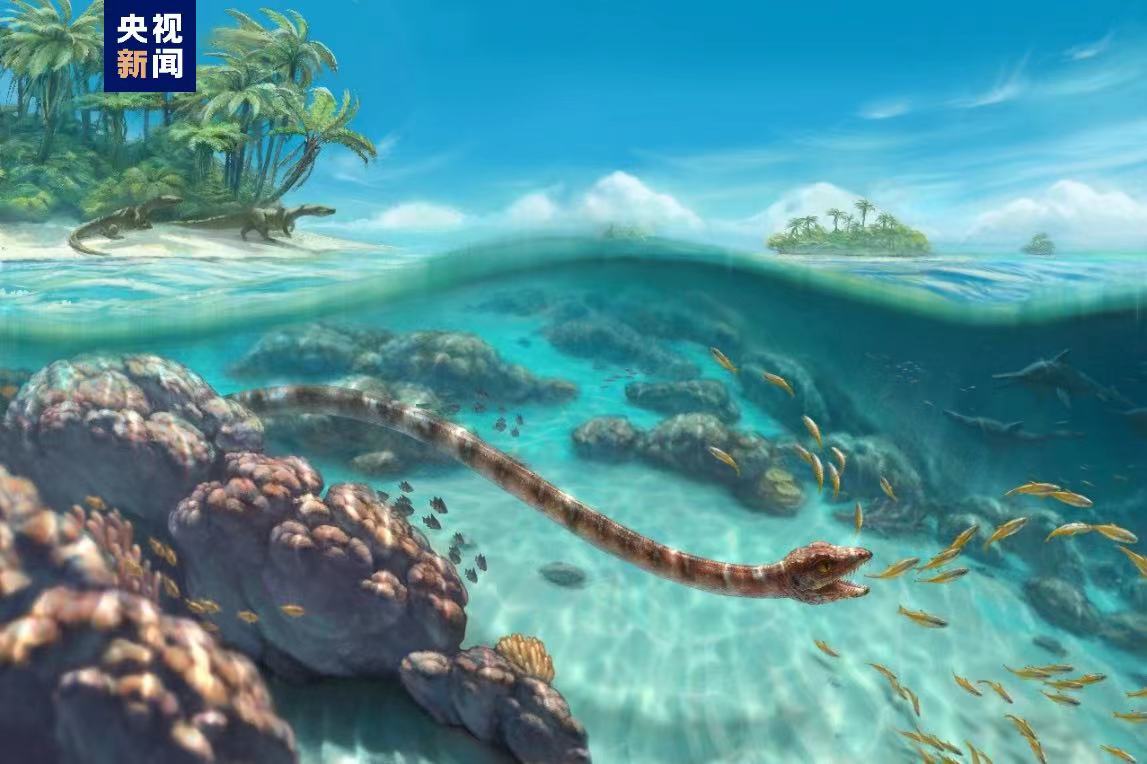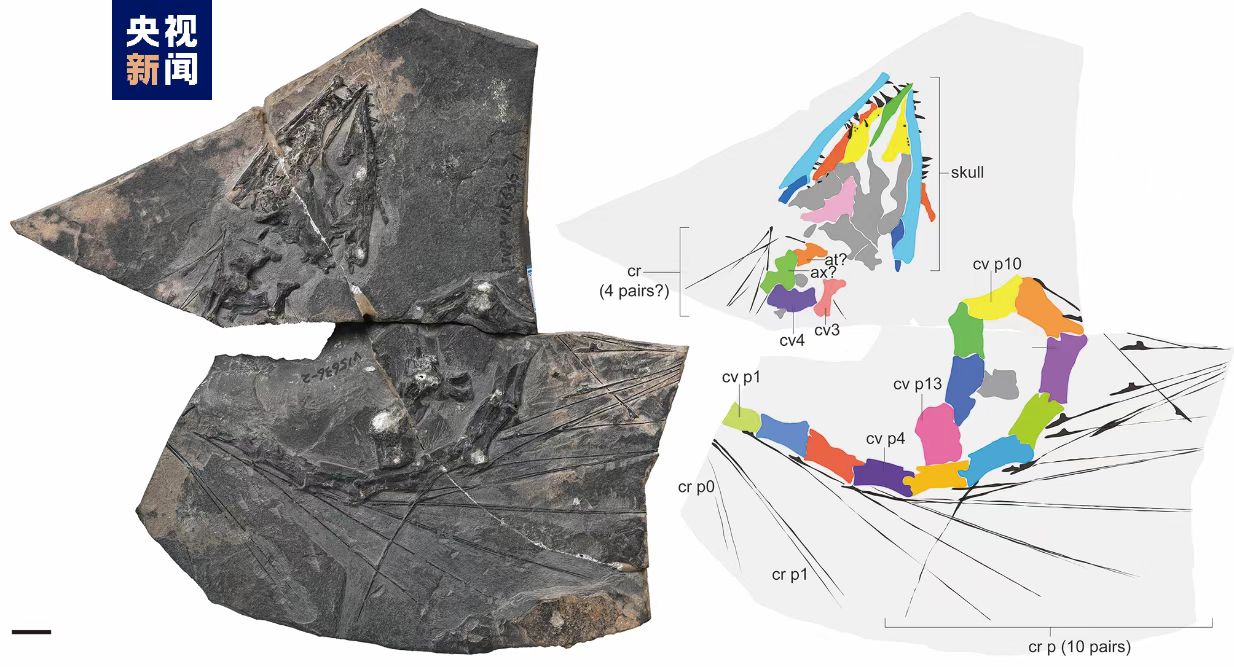Researchers from the Institute of Vertebrate Paleontology and Paleoanthropology discovered a new archosauromorpha species with a slender and long neck dating back more than 200 million years ago when studying the fossils collected in southwest China's Guizhou Province. The species, named Gracilicollum latens, is a marine reptile that feeds on fish.
Archosauromorpha is a clade of diapsid reptiles containing all reptiles more closely related to archosaurs (such as crocodilians and dinosaurs, including birds) rather than Lepidosauria (such as tuataras, lizards, and snakes). Archosauromorphs first appeared during the late Middle Permian or Late Permian, and they became much more common and diverse during the Triassic period.

A simulation of Gracilicollum latens. /By Li Kelai
A simulation of Gracilicollum latens. /By Li Kelai
According to the study published recently in the journal The Anatomical Record, the species is composed of at least 18 cervical vertebrae. The species lengthens the neck not by lengthening each cervical vertebra, but by increasing its number. Although the species is similar in anatomical features to the tanystropheus (a six-meter-long marine reptile with a three-meter-long neck in the Middle Triassic), their neck-lengthening strategy is similar to that of dinocephalosaurus (a long-necked, multi-cervical marine reptile that inhabited the Triassic seas of China).
The study also notes that the long neck suggests that the long neck of archosauromorphas in the Triassic Period may may have been adapted for predation.

A specimen of Gracilicollum latens. /By Wang Wei, one of the article authors
A specimen of Gracilicollum latens. /By Wang Wei, one of the article authors
In the Triassic Period, the length of the neck of some archosauromorpha species was more than half their total length. A long neck offers a number of survival advantages, including expanded vision, easy access to food, and increased range of motion.
(If you want to contribute and have specific expertise, please contact us at nature@cgtn.com.)